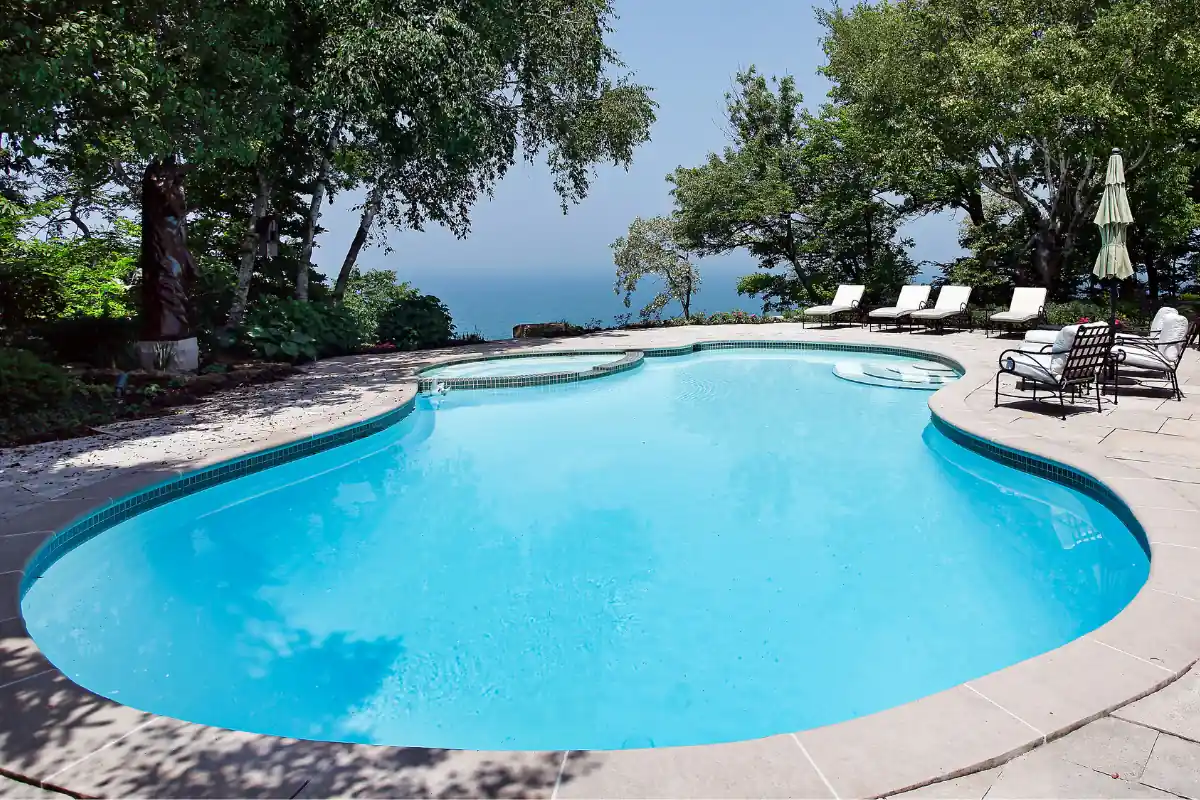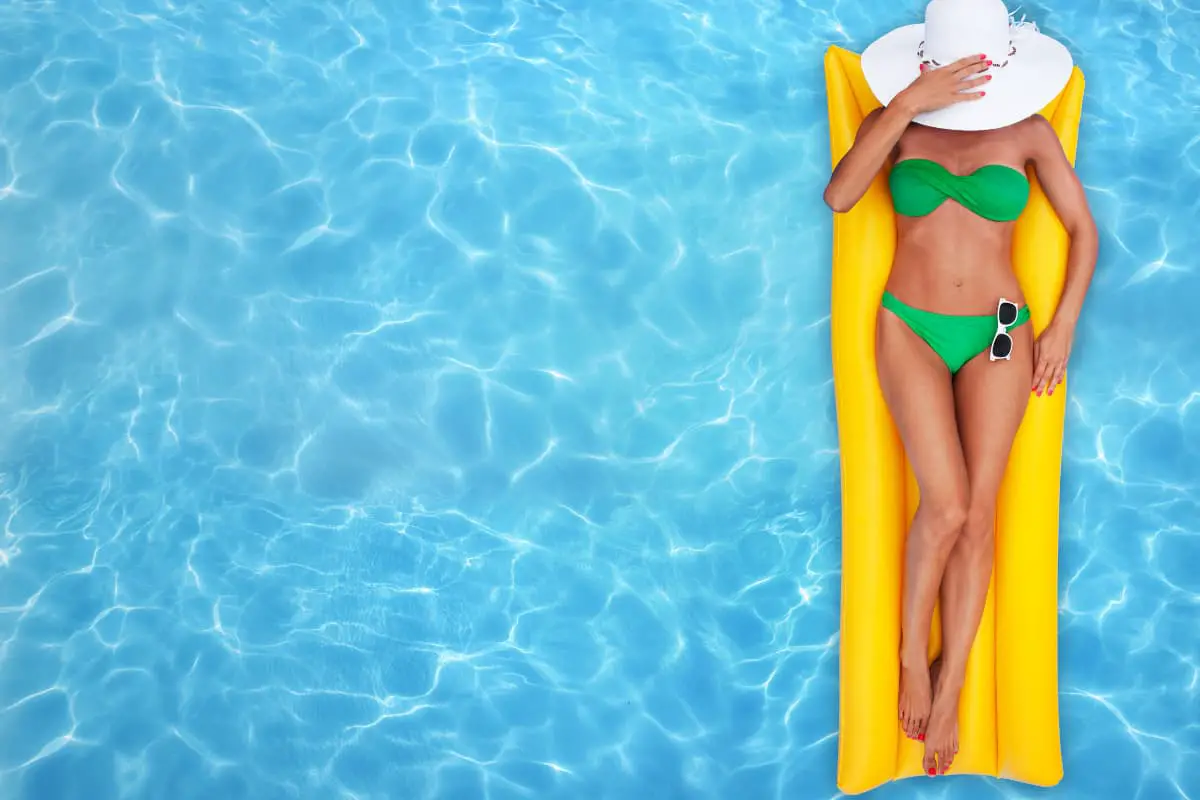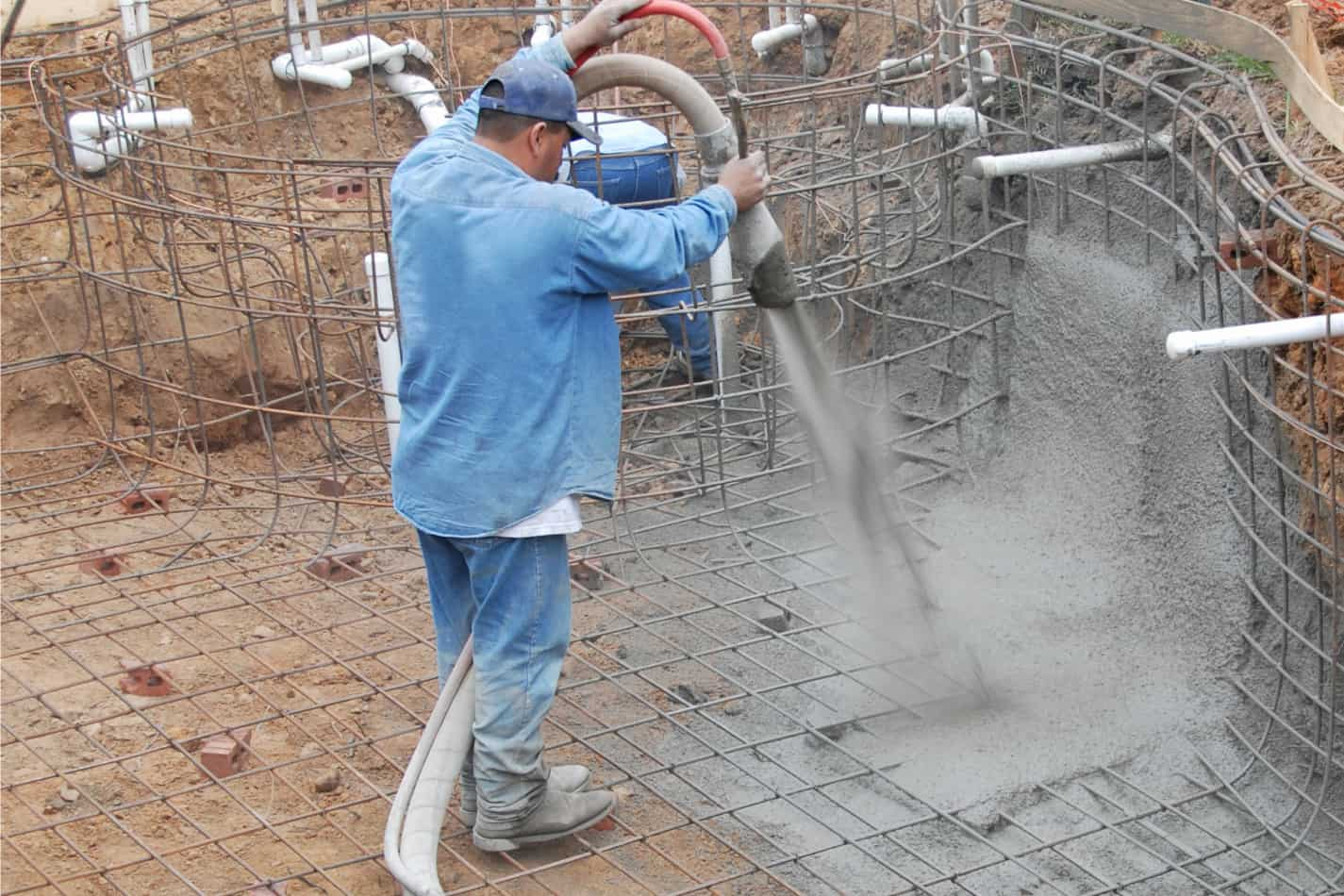Fixing That White Chalky Look in Your Fiberglass Pool

As an Amazon Associate I earn from qualifying purchases.
If you’re here then you must be worried about those white stuff on fiberglass pool walls. Even if you clean them, they seem to come back pretty fast. “Why is my fiberglass pool chalky?” – is a common question among new hot tub owners and here I will be providing you some answers.
The imbalance of water chemistry causes a white chalky look in your fiberglass pool. To get rid of it, make sure to maintain its chemicals. Adjust the pH levels within 7.4 and 7.6. Calcium levels shouldn’t be too low or high as it could also cause calcium deposits to build upon your fiberglass pool.
There are multiple reasons why your fiberglass pool might be looking a bit chalky. In this article, I take a look at some of the most common reasons and provide some simple solutions.
Learn How to Manage Your Pool and Hot Tub
Frustrated trying to keep your pool clear? Feeling confused about when to add the right chemicals? Get the perfect easy-to-use, illustrated ebook and video course today!
Why Does The Fiberglass Pool Look Chalky?
Low levels of calcium saturation and high levels of pH and chlorine cause the fiberglass pools to build a chalky effect. Calcium building on pool walls is also known as scaling. Brushing such walls can make the pool water cloudy, which will eventually lead to a white chalky look.
Two types of calcium compounds may be responsible for this white chalky look. Calcium carbonate and calcium silicate. The formation of calcium carbonate will make the pool walls slightly white.
Scraping it off may turn the pool water white. On the other hand, calcium silicate forming on the fiberglass walls will leave a greyish layer on the walls and make the pool water grey.
Here are some reasons why your fiberglass pool might be chalky:
Extreme pH Levels
Too low levels of pH may result in the formation of calcium carbonate and calcium silicate. High levels of pH are also harmful to the pool walls.
If the pH level of the pool water is around 7.6 to 8.0, it is too much for a fiberglass pool. The pool water becomes too alkaline.
Water containing too much alkalinity will cause chlorine to lose its effectiveness. As a result, it causes cloudy water and scaling on the pool walls.
High Chlorine Levels
Having high chlorine levels can be a reason as well. Adjusting the chlorine level above 3 or 4 will make the pool water too cloudy. It also interrupts the gel coat of the fiberglass.
Fiberglass gel coat may fade due to high levels of chlorine. It is especially true when there is no balanced stabilizer in the pool water to protect the pool walls, steps, or the water.
Low Calcium Levels
When the calcium levels in pool water are too low, it may cause a white chalky look. When adjusted around 100 to 290 ppm, it is considered low.
Calcium levels under 100 ppm will make the water corrosive. It starts dissolving the fiberglass gel coat, which eventually causes the pool to have a chalky look.
Is It Safe to Swim In a Pool With a White Chalky Look?
Generally, it is harmful to swim in a pool with a white chalky look. It invites danger as it indicates an imbalance in the pool. The imbalance of chemicals may lead to health issues, rashes, and irritation in the eyes.
Swimming in cloudy pool water makes it difficult for the swimmers to see through the water. There is always a high chance of drowning with cloudy pool water. Hence, if the drain at the bottom of the fiberglass pool is not visible, it is best not to swim in it.
Moreover, it can make it difficult for others above the pool to detect if anyone is struggling under the water. They will not send help, and it will lead to severe dangers. In addition, other than just its appearance, the chemical imbalance may also cause such situations.
As mentioned earlier, high levels of chlorine and pH contribute to the white chalky look. Such exposure can be extremely dangerous to health.
It may cause lung damage, skin irritation, rashes, and eye irritation. It is not always possible to keep out pool water entering your body.
So, when it does enter, chlorine can disrupt the internal system of your body. Thus, it is best to stay away from a pool with white stuff on fiberglass pool walls.
How to Fix that White Chalky Substance from Your Fiberglass Pool?
Similarly, one might ask how to fix or remove that white chalky substance from your fiberglass pool.
There are some basics that you may already know before removing that white stuff on fiberglass pool walls. If you’re a beginner, know that it is not as hard as it sounds.
However, it is worth mentioning that if there’s a formation of carbon silicate in your fiberglass, it may be difficult for a beginner to scrape it off.
Their build-ups are quite hard to remove, especially if they’ve already piled up in the filtration and pipes systems.
In most cases, it is because of an imbalance of water maintenance. Here’s an outline of the fundamentals in the removing process of that white chalky substance from your fiberglass pool.
- Adjust calcium level
Usually, when the calcium level is around 150 to 250 or above 400, it makes the pool water cloudy. Adjusting it above 300 will ensure that it changes its white chalky look.
If the pool water contains a calcium level above 400, lower it to keep it within 300 and 400.
- Adjust the pH level
Set the pH levels at optimal levels. Excess pH leads to the deposition of that white chalky substance on the walls. The optimal range for pH level is around 7.4 to 7.6; setting it within this range will also help cancel out the calcium deposit.
Use a Phenol red indicator to check the pH levels. Make sure that it isn’t too high or too low. It is advisable to wait for 12 hours before releasing the pool acid the second time.
- Wipe off the white substance
As rubbing a pumice stone on fiberglass pools will leave scratches, it is better to wipe it off. Use a soft brush or foam to gently rub the fiberglass pool walls.
You may as well use a professional calcium remover solution in small amounts before rubbing the walls. It will help dissolve calcium silicate, which is quite hard to remove.
And if it is calcium carbon, use scaling treatment as it will not damage fiberglass pools. It will still be wise to test the solution beforehand to check if it discolors the pool walls.
- Adjust Chlorine Level
As high levels of chlorine may dissolve the gel coat of the fiberglass pool walls and surfaces, it is better to keep it low. Keep the chlorine level below 3 or 4 to avoid the chalky look.
However, if the white chalky substance is hard enough, lower it to 0.0 ppm and leave it for a few hours. Once the white substance is removed, adjust it again below 3.
After adjusting these chemical levels, the pool water can be expected to turn transparent. It may only require a total of 24 hours. After that, it will be completely suitable for swimming.
Learn How to Manage Your Pool and Hot Tub
Frustrated trying to keep your pool clear? Feeling confused about when to add the right chemicals? Get the perfect easy-to-use, illustrated ebook and video course today!
Conclusion
As you can judge, a white chalky look in your fiberglass pool shouldn’t be left without treatment. It is not safe to swim in such pool water.
It should be removed gently and regularly checked with powerful indicators as fiberglass pools are delicate and require your attention.
I hope that after reading this article you’ve got a complete answer to your question, “Why is my fiberglass pool chalky?” and have learned what to do about it. Thanks for reading. Have a great day.


